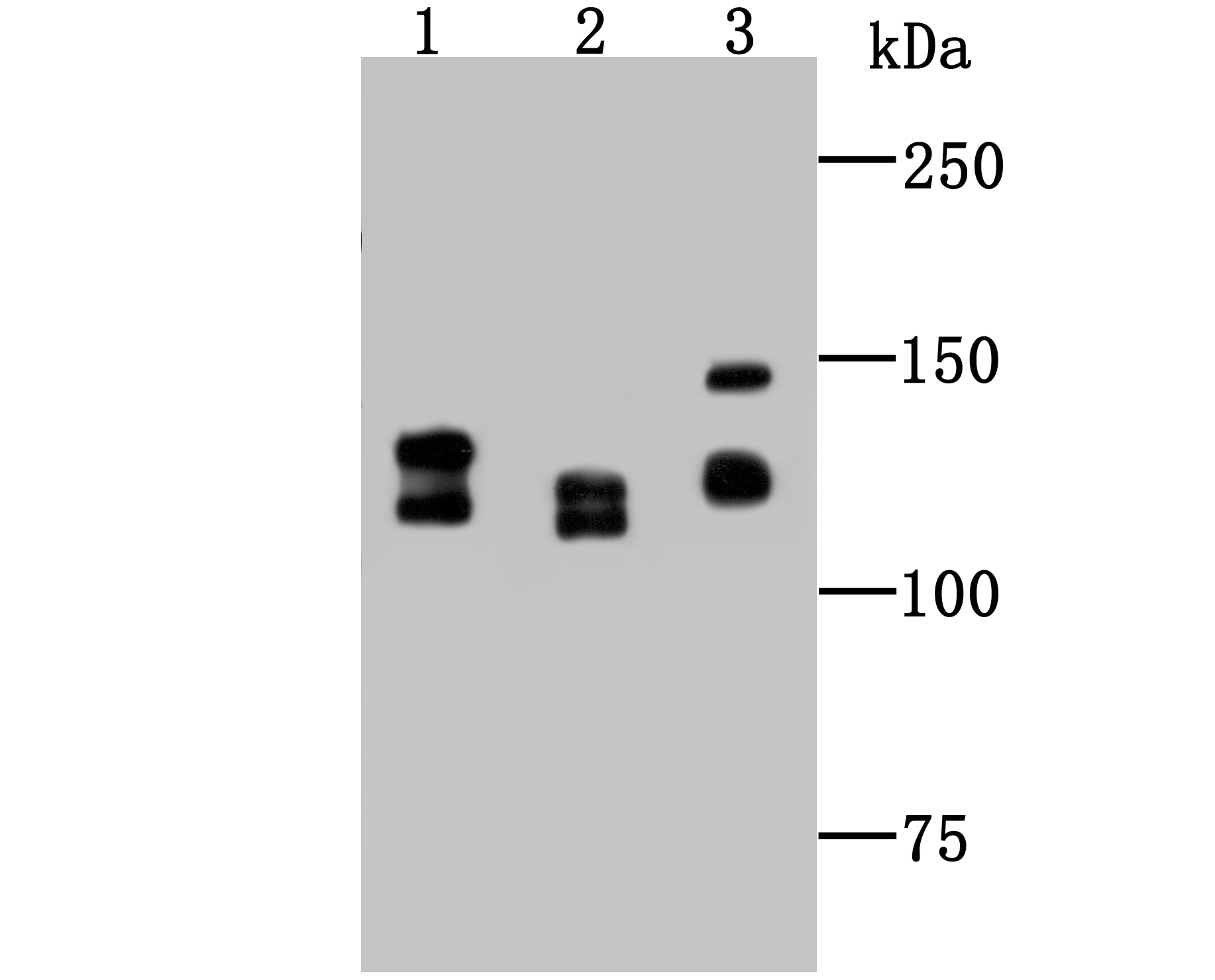
Fig1: Western blot analysis of DDB1 on different cell lysate using anti-DDB1 antibody at 1/1,000 dilution. Positive control: Lane1: Mouse colon tissue Lane2: PC-12 Lane3: Siha
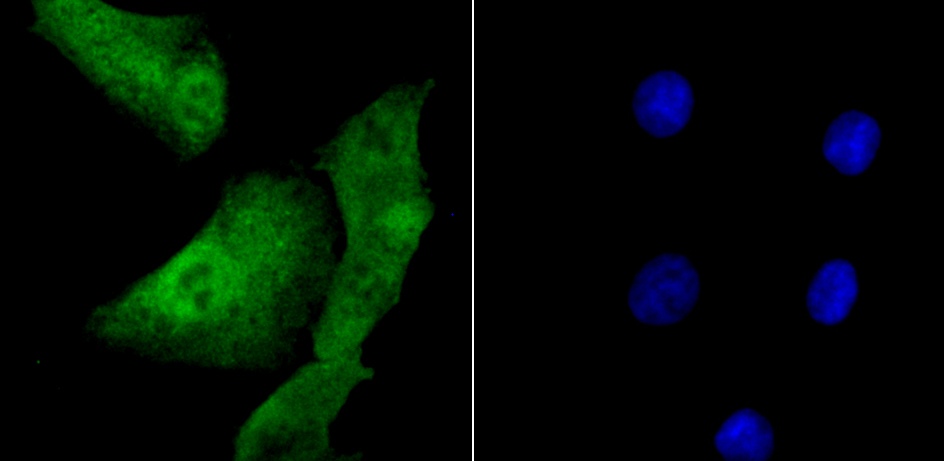
Fig2: ICC staining DDB1 in A549 cells (green). The nuclear counter stain is DAPI (blue). Cells were fixed in paraformaldehyde, permeabilised with 0.25% Triton X100/PBS.
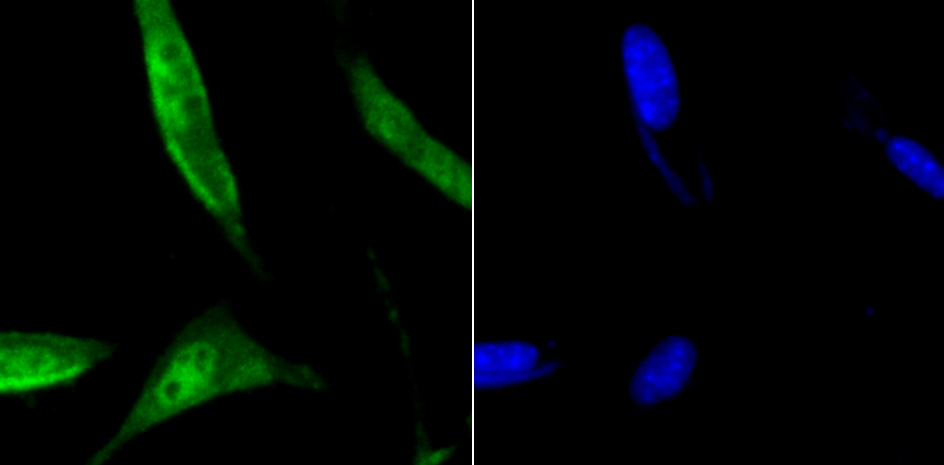
Fig3: ICC staining DDB1 in SH-SY5Y cells (green). The nuclear counter stain is DAPI (blue). Cells were fixed in paraformaldehyde, permeabilised with 0.25% Triton X100/PBS.
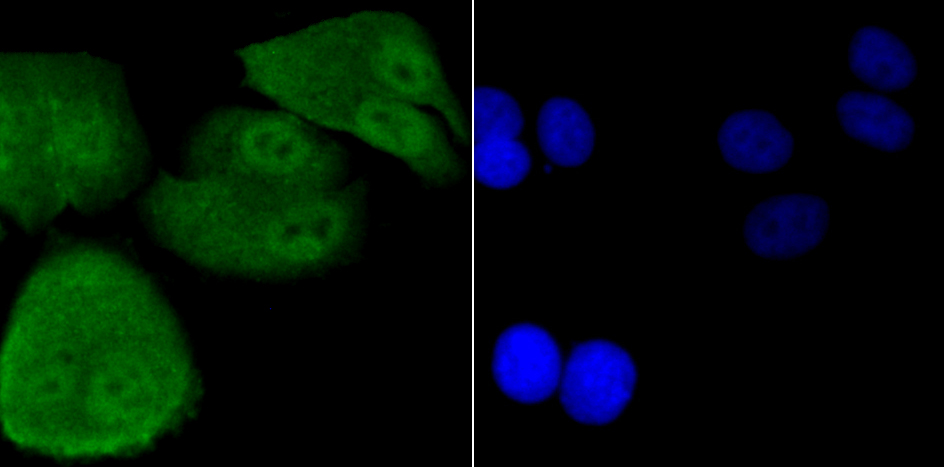
Fig4: ICC staining DDB1 in SK-Br-3 cells (green). The nuclear counter stain is DAPI (blue). Cells were fixed in paraformaldehyde, permeabilised with 0.25% Triton X100/PBS.
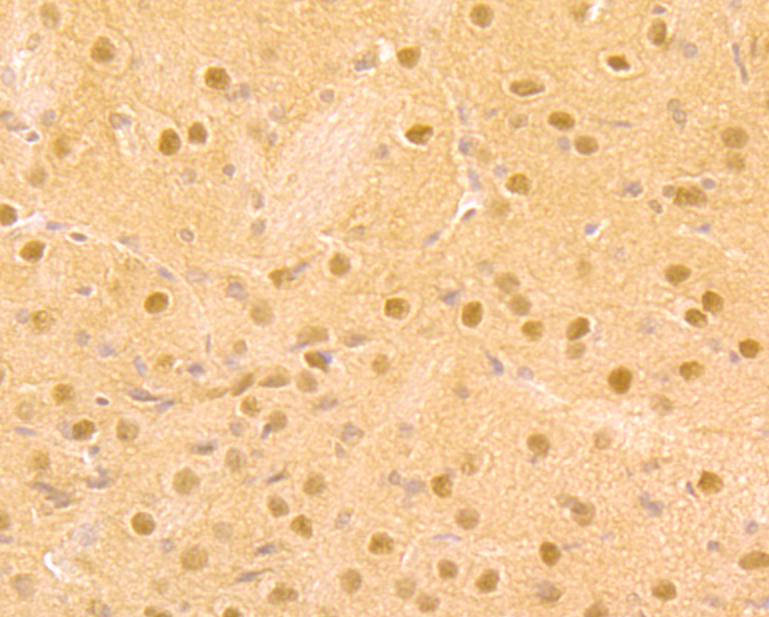
Fig5: Immunohistochemical analysis of paraffin-embedded rat brain tissue using anti-DDB1 antibody. Counter stained with hematoxylin.
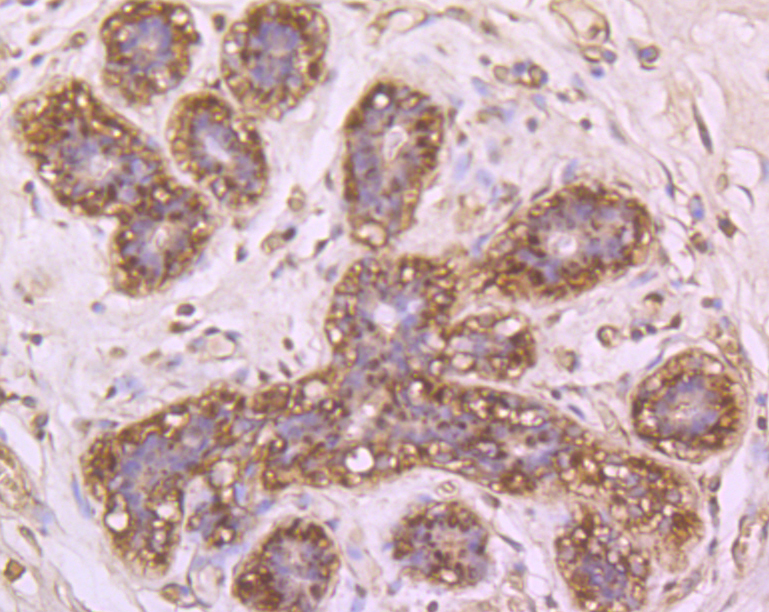
Fig6: Immunohistochemical analysis of paraffin-embedded human breast tissue using anti-DDB1 antibody. Counter stained with hematoxylin.
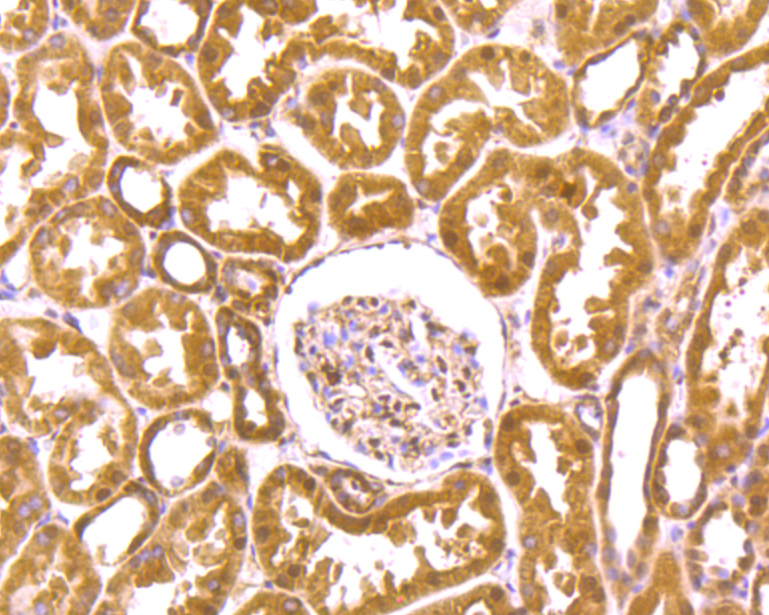
Fig7: Immunohistochemical analysis of paraffin-embedded human kidney tissue using anti-DDB1 antibody. Counter stained with hematoxylin.
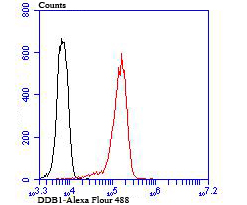
Fig8: Flow cytometric analysis of K562 cells with DDB1 antibody at 1/100 dilution (red) compared with an unlabelled control (cells without incubation with primary antibody; black).
Product Profile
| Product Name | DDB1 |
|---|---|
| Antibody Type | Primary Antibodies |
| Product description |
|
| Immunogen | Recombinant protein |
Key Feature
| Clonality | Polyclonal |
|---|---|
| Isotype | IgG |
| Host Species | Rabbit |
| Tested Applications | |
WB:1:500-1:1000 ICC:1:100-1:500 IHC:1:100-1:500 FC:1:50-1:100 |
|
| Species Reactivity | |
| Concentration | 1 mg/mL. |
Target Information
| Alternative Names | Damage specific DNA binding protein 1 antibody
Damage-specific DNA-binding protein 1 antibody
DDB 1 antibody
DDB p127 subunit antibody
Ddb1 antibody
DDB1_HUMAN antibody
DDBa antibody
DNA damage binding protein 1 antibody
DNA damage-binding protein 1 antibody
DNA damage-binding protein a antibody
HBV X-associated protein 1 antibody
UV damaged DNA binding factor antibody
UV damaged DNA binding protein 1 antibody
UV DDB 1 antibody
UV DDB1 antibody
UV-damaged DNA-binding factor antibody
UV-damaged DNA-binding protein 1 antibody
UV-DDB 1 antibody
X associated protein 1 antibody
XAP 1 antibody
XAP-1 antibody
XAP1 antibody
Xeroderma pigmentosum group E complementing protein antibody
Xeroderma pigmentosum group E-complementing protein antibody
XPCe antibody
XPE antibody
XPE BF antibody
XPE binding factor antibody
XPE-BF antibody
XPE-binding factor antibody
|
|---|---|
| Molecular Weight(MW) | 127 kDa, additional band 150kDa |
| Cellular Localization | Nucleus. Cytoplasm. |
Database Links
| SwissProt ID | Q16531 Q3U1J4 Q9ESW0 |
|---|
Application
-

Application
Fig1: Western blot analysis of DDB1 on different cell lysate using anti-DDB1 antibody at 1/1,000 dilution. Positive control: Lane1: Mouse colon tissue Lane2: PC-12 Lane3: Siha
-

Application
Fig2: ICC staining DDB1 in A549 cells (green). The nuclear counter stain is DAPI (blue). Cells were fixed in paraformaldehyde, permeabilised with 0.25% Triton X100/PBS.
-

Application
Fig3: ICC staining DDB1 in SH-SY5Y cells (green). The nuclear counter stain is DAPI (blue). Cells were fixed in paraformaldehyde, permeabilised with 0.25% Triton X100/PBS.
-

Application
Fig4: ICC staining DDB1 in SK-Br-3 cells (green). The nuclear counter stain is DAPI (blue). Cells were fixed in paraformaldehyde, permeabilised with 0.25% Triton X100/PBS.
-

Application
Fig5: Immunohistochemical analysis of paraffin-embedded rat brain tissue using anti-DDB1 antibody. Counter stained with hematoxylin.
-

Application
Fig6: Immunohistochemical analysis of paraffin-embedded human breast tissue using anti-DDB1 antibody. Counter stained with hematoxylin.
-

Application
Fig7: Immunohistochemical analysis of paraffin-embedded human kidney tissue using anti-DDB1 antibody. Counter stained with hematoxylin.
-

Application
Fig8: Flow cytometric analysis of K562 cells with DDB1 antibody at 1/100 dilution (red) compared with an unlabelled control (cells without incubation with primary antibody; black).
| Positive Control | Mouse colon tissue lysate, PC-12, Siha, A549, SH-SY5Y, SK-Br-3, K562, human breast, human kidney, rat brain. |
|---|---|
| Application Notes | WB:1:500-1:1000 ICC:1:100-1:500 IHC:1:100-1:500 FC:1:50-1:100 |
Additional Information
| Form | Liquid |
|---|---|
| Storage Instructions | Store at +4℃ after thawing. Aliquot store at -20℃ or -80℃ Avoid repeated freeze / thaw cycles. |
| Storage Buffer | 1*TBS (pH7.4), 0.5%BSA, 50%Glycerol. Preservative: 0.05% Sodium Azide. |
- Related products
- Camel Growth Hormone (GH) ELISA Kit OM642709
- Camel Insulin-like growth factors 1 (IGF-1) ELISA Kit OM642708
- Human HIV-1 p24 core protein (HIV-1 p24) antibody ELISA Kit OM642706
- Antigen Repair 20X pH6.0 OM642703
- 647 labeled Tyramide OM642699
-
- ASSAY KITS
-
- SERUM
2013 © Omnimabs , All Rights Reserved.

